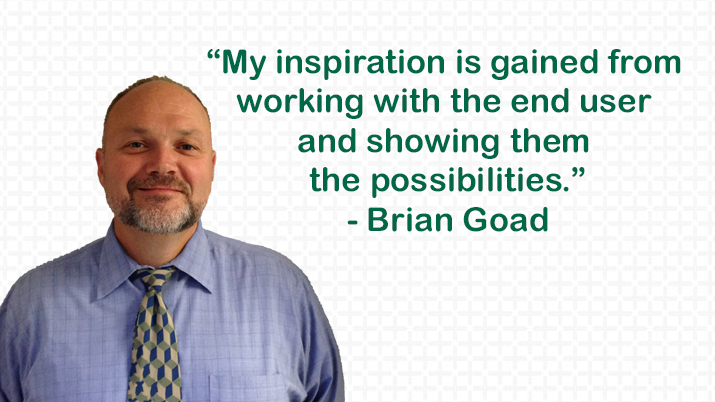“I enjoy making interface work seamlessly with client work-flows,” said Goad, vice president of engineering services at HealthSlide Inc. “My inspiration is gained from working with the end user and showing them the possibilities.”
Founded in 1999, HealthSlide specializes in products and services that maximize the interoperability of its healthcare clients’ systems.
HealthSlide seems like a great fit for Goad. “Initially, I wanted a stable position, then had a chance to work in interoperability,” Goad said. “From that moment on, I wanted to make a difference in the (various) facilities I worked in.
“That is the attraction that keeps me in this arena,” Goad said.
Interoperability in Health IT
Interoperability is achieved when different systems and devices are able to exchange and interpret data, and then present it in a manner that the user can understand. At HealthSlide, Goad, through his own work and by overseeing the work of other employees, finds ways to provide workable and cost-effective ways to bring inoperability to health care organizations’ functions.
According to Goad, the true value of interoperability comes from the streamlining of data it results in.
“Interoperability benefits society by reducing the volume of questions for exams,” Goad said.
“For instance, all of us have had an experience in a healthcare facility that the same questions are asked by different departments,” Goad said. “This is typically because the systems are not communicating.”
The Benefits of Higher Education
Earning his degree, Goad said, allowed him to learn from those who had gone before him in the field.
“Higher learning allocates an environment to learn from others’ experiences,” Goad said.
Higher education also taught Goad to deal with challenges, essential to his work in an occupation that demands innovation and imagination.
“I feel that earning my degree taught me to be persistent and to push through the walls that get created by process, red tape or lack of understanding,” Goad said.
HL7 and its Role in Interoperability
Health Level Seven (HL7) is an Accredited Standards Developing Organization. International volunteers come together quarterly to meet, produce and adjust documents describing the sharing of clinical information between different healthcare applications. HL7 is the standard healthcare application vendors are sticking to when it comes to creating application programs and interfaces focused on transferring sensitive patient information.
Goad says understanding the demands of HL7 is something unique to the interoperability field and professionals need to be familiar with it. HL7 is “hands down” something only a health care professional would understand, Goad said. “This format is used by most systems to exchange data.”
HL7, like interoperability is always changing. HL7 bends and adjusts its standards to better meet patient needs in addition to better serving healthcare app vendor systems. Doing this makes it possible to continue sharing patient information quickly and accurately, improving the healthcare experience for everyone involved.
Typical Vice-Presidential Duties
Vice presidents such as Goad are among the top executives in their organizations. They are looked to for strategic leadership and guidance. Their responsibilities include:
- Heading Departments: VPs focus on the specific operations of each department, usually dealing with operations and budgeting.
- Reporting to the President: A smaller company may have only one vice president. In larger organizations it’s not uncommon to see dozens of vice presidents, all serving a different purpose and reporting the happenings of their departments back to the president and company leaders.
- Collaborating on Strategy: Vice presidents understand the vision and long-term goals the company has. Vice presidents work with each other to initiate strategic goals geared at moving the company in a specific direction.
- Managing Personnel: While vice presidents may not become directly involved in day-to-day human resources decisions, they still have managerial duties. Vice presidents often establish hiring goals and supervise payroll budgets for their departments.
Keeping the User in Mind
Goad believes it’s essential for students and healthcare IT professionals, present and prospective, to consider the user’s experience.
“First and foremost you need to put yourself in the shoes of the person having to utilize the software you are creating or implementing. Understanding the pains and frustrations will enhance your views and create opportunities for improvement.”



